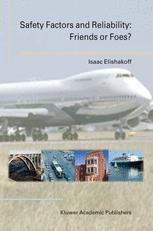

Most ebook files are in PDF format, so you can easily read them using various software such as Foxit Reader or directly on the Google Chrome browser.
Some ebook files are released by publishers in other formats such as .awz, .mobi, .epub, .fb2, etc. You may need to install specific software to read these formats on mobile/PC, such as Calibre.
Please read the tutorial at this link: https://ebookbell.com/faq
We offer FREE conversion to the popular formats you request; however, this may take some time. Therefore, right after payment, please email us, and we will try to provide the service as quickly as possible.
For some exceptional file formats or broken links (if any), please refrain from opening any disputes. Instead, email us first, and we will try to assist within a maximum of 6 hours.
EbookBell Team

5.0
108 reviewsHave you ever wondered where the safety factors come from? Why is it that deterministic analysis has reached a very sophisticated level, but in the end empirical factors are still needed? Is there a way to select them, rather than assigning them arbitrarily as is often done?
This book clearly shows that safety factors are closely related with the reliability of structures, giving yet another demonstration of Albert Einstein's maxim that "It is incomprehensible that Nature is comprehensible". The book shows that the safety factors are much more comprehensible if they are seen in a probabilistic context. Several definitions of the safety factors are given, analytical results on insightful numbers are presented, nonprobabilistic safety factors are shown, as well as their estimates derived by the inequalities of Bienayme, Markov, Chebushev and Camp-Meidell. A special chapter is devoted to important contributions by Japanese experts.
This volume will help to critically re-think the issue of safety factors, which can create a false feeling of security. The deterministic paradigm can be enhanced by incorporating probabilistic concepts wisely where they are needed without treating all variables as probabilistic ones. The book shows that there is a need of their integration rather than separation.
This book is intended for engineers, graduate students, lecturers and researchers.